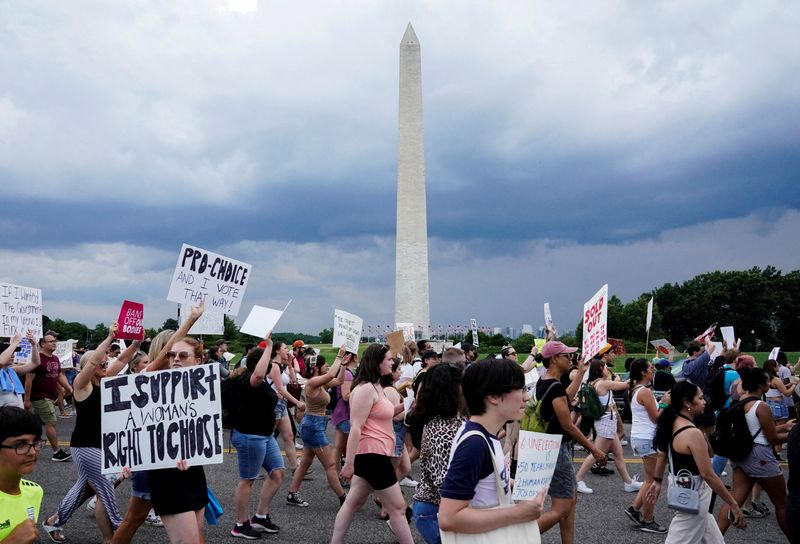By Joseph Ax
(Reuters) - The outcome of state supreme court races in Tuesday's midterm elections could have profound consequences for control of the U.S. Congress in the future, as well as abortion rights in several states.
The races, typically a political afterthought, emerged as electoral battlegrounds this year, especially after the U.S. Supreme Court's decision in June to eliminate a nationwide right to abortion.
Here's a rundown of the results from pivotal states:
NORTH CAROLINA
Two Republican challengers, Trey Allen and Richard Dietz, defeated Democratic incumbent Sam Ervin and Democratic candidate Lucy Inman, flipping control of the state's highest court from a 4-3 Democratic edge to a 5-2 Republican majority.
In a split decision along party lines, the current court had invalidated Republican-drawn legislative and congressional maps as illegally partisan, tossing out a redistricting plan that likely would have handed Republicans at least 10 of the state's 14 U.S. House seats. Instead, a redrawn map the court deemed less biased resulted in an even 7-7 split on Tuesday.
But the redistricting decision only applied to this year, and Republican lawmakers who control the state's legislature could seek to muscle through another partisan map in time for the 2024 election if they believe the court's new conservative majority will be less inclined to strike it down.
The new court could also look more favorably on abortion restrictions, although North Carolina's Democratic governor, Roy Cooper, holds veto power over legislation.
OHIO
The partisan makeup of Ohio's top court will remain 4-3 in favor of Republicans, after Republicans swept all three races on Tuesday's ballot. But the retirement of Chief Justice Maureen O'Connor, who sided with the court's three Democrats in several rulings, could push the court to the right.
In particular, O'Connor was part of the majority that issued several 4-3 rulings this year finding that Republican-backed legislative and congressional maps illegally disfavored Democrats. The maps remained in use for this year, and the court's conservative majority will have the power to review redrawn maps for 2024.
The new court is also likely to hear a challenge to the state's six-week abortion ban, with litigation working its way through lower courts.
OTHER STATES
The races in Illinois drew the most campaign spending by far, according to the nonprofit Brennan Center for Justice at New York University. Business interests had hoped Republicans could reverse a slim Democratic majority, but Democrats held the court after the party asserted that abortion rights could be endangered if conservatives had control.

In Kansas, six of the seven justices won the right to remain on the bench, likely ensuring the court's 2019 decision upholding a state constitutional right to abortion will be preserved. Voters earlier this year rejected a measure that would have explicitly made abortion unconstitutional.
Michigan's court will remain controlled by Democratic-aligned justices after two incumbents won re-election. The court had been expected to weigh in on the state's 1931 abortion ban, but voters approved a referendum enshrining abortion rights in the state constitution, effectively making the law moot.